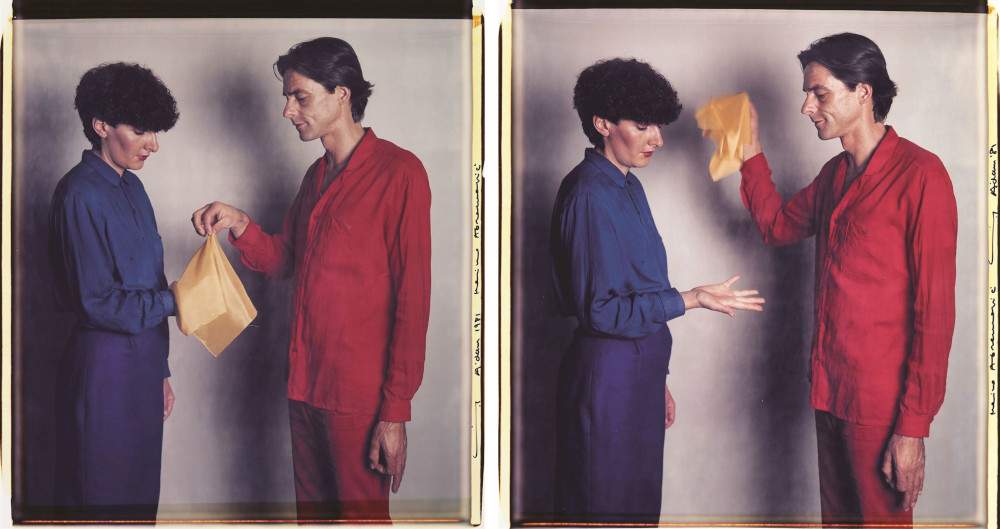At the Matalon Foundation an extensive exhibition on women and photography, from Cindy Sherman to Vanessa Beecroft
From October 8 to November 28, 2021, the Luciana Matalon Foundation in Milan presents the exhibition Women and Photography, curated by Maria Francesca Frosi and Dionisio Gavagnin. An extensive exhibition dedicated to the female gaze in photographic art and the innovative contribution women have made to photography.
Organized in collaboration with the cultural association Mandr.agor.art, the exhibition is the result of selection work carried out by the curators, who have chosen ninety original photographs by ninety female photographers to narrate the female point of view in photography and its process of evolution over almost a century, with works ranging from 1925 to 2018. From Diane Arbus to Margaret Bourke-White, from Lisetta Carmi to Regina José Galindo, and then Gerda Taro, Lisette Model, Sandy Skoglund, Marina Abramović, Tina Modotti, Gina Pane, Francesca Woodman, Nan Goldin, Sophie Calle, Cindy Sherman, Inge Morath: these are just some of the names of the women artists present with their shots.
The thematic cores around which the exhibition is developed are mainly two: empathy and the search for identity. “Women’s artistic production is distinguished from men’s by a specificity determined by a distinct sensibility for reasons of nature, culture, and social role,” the curators explain. “On the one hand, women are influenced by their role as mothers, which makes them empathetic and sensitive to human survival and well-being. The second driving theme is that of identity in the social sphere, felt as compressed or unexpressed.”
The two macro-themes are then declined in an exhibition itinerary divided into four chapters, “The Search for the Self between Female Identity and Social Roles,” “Sympathies,” “Women, Fashion, Costume,” and “On the Piece. Inside Current Events.”
In the twentieth century, thanks in part to more manageable photographic equipment, more and more women used photography as a means of expression. The themes are the same as in documentary photography, but the female eye is moved, moved, and the subject emerges from the image as closely connected to a pathos resulting from a pietas that seems to understand, protect, love. Children, families, friends constitute some of the most frequently visited subjects in women’s photography of empathy. It is a frequent theme in Dorothea Lange, a pioneer of social photography documenting the aftermath of the 1929 crisis: on display is a shot of her from the 1930s entitled Feeding of Orphans; in Lisette Model, who tirelessly photographed every corner of the city, highlighting its stark social contrasts, whose work Sammy’s Bar at the Bowery, circa 1940, is admired; in Gerda Taro, who is present in the exhibition with a shot portraying a member of the Republican militia during the Spanish-American War (she was one of the first photojournalists at the front); and, after World War II, in Diane Arbus and Lisetta Carmi, the latter among the first photographers to deal with gender identity and the LGBT movement by making the famous series I Travestiti, a shot of which is on display in the exhibition.
Human empathy is also found in the images of violence, war, emigration, and fear by Letizia Battaglia, Christine Spengler (who focuses on war photography captured from the point of view of its victims: 1975’s Le bombardement de Phnom-Penh is her present shot), Regina José Galindo, Yto Barrada, or in the dystopias of Sandy Skoglund. A more universal and all-encompassing feeling of empathy, on the other hand, is what fuels the creativity of artists such as Tina Modotti, whose pivotal theme is the denunciation of the conditions of misery in Mexico, well represented in the exhibition by the 1925 work Bateau et pêcheurs, and Gina Pane, who in the shot Deuxième projet du silence puts herself and her body on the line.
The theme of women’s identity in the social context is documented in a number of female photographers who introduce this process of searching for one’s identity. Whether it is a suffered introspection on the edge of dreams or madness, as in the photos of Francesca Woodman, from whose revolutionary images emerges a reflection on the relationship between the body and the world around it and whose 1977-78 Untitled can be admired in the exhibition, or in Ketty La Rocca, Sophie Calle, Nan Goldin; or the man-woman relationship in its sexual and power implications, as in Olga Spolarics (Atelier Manassé) present in the exhibition with a surrealist shot that portrays a woman as a sugar cube, probably the first time in which woman is transformed into an object, in Marina Abramović, Odinea Pamici; or in the denunciation of minority and stereotyped roles or “fashionable” behavior to which women are forced by male chauvinist laws and the market, as in Cindy Sherman, who through the tool of disguise fully explores the concept of identity, or in Vanessa Beecroft.
The exhibition is accompanied by a catalog, published by Mandr.agor.art, with critical texts by Maria Francesca Frosi and Dionisio Gavagnin.
For info: fondazionematalon.org
Hours: Tuesday through Sunday from 10 a.m. to 7 p.m. Closed Mondays.
Tickets: Full 8 euros, reduced 6 euros.
Image: Marina Abramović, Untitled, from the Gold series, (1981; color polaroid dittic, 60 x 56 cm each)
 |
| At the Matalon Foundation an extensive exhibition on women and photography, from Cindy Sherman to Vanessa Beecroft |
Warning: the translation into English of the original Italian article was created using automatic tools. We undertake to review all articles, but we do not guarantee the total absence of inaccuracies in the translation due to the program. You can find the original by clicking on the ITA button. If you find any mistake,please contact us.





























